In December 2022, a United Airlines Boeing 777 had a terrifying takeoff while departing Hawaii. The National Transportation Safety Board (NTSB) has now released its final report on the incident, and it’s quite something…
In this post:
A United 777’s terrifying takeoff from Maui
First let’s go over the background of the incident. On December 18, 2022, United Airlines flight UA1722 was scheduled to operate from Maui (OGG) to San Francisco (SFO) with a 22-year-old Boeing 777-200 that had the registration code N212UA.
The plane took off at 2:49PM and climbed to 2,100 feet. At that point the plane began a steep dive, descending at nearly 8,600 feet per minute, which would have produced forces of nearly 2.7x the force of gravity. The plane descended down to 748 feet above sea level.
Fortunately at that point the pilots recovered the aircraft, and the flight continued to San Francisco without further issues. There were no injuries, and no damage to the aircraft. It can’t be overstated just how close of a call this was. At a descent rate of 8,600 feet per minute and an altitude of 775 feet, the plane was seconds from catastrophe.
What caused this United 777 incident?
How could two pilots nearly crash a 777 into the ocean when visibility was good? The NTSB has just released its final report about this incident, so now we know what caused this incident.
The first thing to note is that the pilots were pretty experienced, with the captain being a lot more experienced than the first officer on this aircraft. The captain had a total of 19,600 flight hours (including 5,000 hours on the 777), while the first officer had 5,300 flight hours (including 120 hours on the 777). So around 25,000 hours of experience in the cockpit is quite a bit, though the first officer was basically brand new on the 777.
What’s the cause of this incident? Well, it boils down to a miscommunication between the captain and first officer, and a failure to recover quickly from that miscommunication. Here’s what the NTSB’s investigation revealed:
- The captain and first officer had agreed to take off with flaps set at 20 degrees, based on performance calculations
- The captain was the one flying this segment, and while the initial climb out was normal, the flight crew noticed airspeed fluctuations due to wind shear, so the captain called for the flaps to be reduced to five degrees
- The first officer thought he heard the captain say 15 degrees, rather than five degrees, so that’s what the first officer set the flaps to (the pilot not flying is the one who sets flaps)
- The captain noticed the plane wasn’t responding the way he expected, and that the airspeed was accelerating rapidly
- Therefore the captain reduced the engine thrust manually, to avoid flying too fast with flaps
- He again called for the flaps to be moved to five degrees, and at this point the first officer moved the flaps to five degrees
- The first officer “knew the captain was having difficulty with airspeed control,” and asked the captain if maybe his instruments were wrong, but he didn’t receive an immediate response
- Both pilots remembered feeling the airplane’s pitch decreasing, and the airspeed increasing
- The captain then called for flaps to be set to one degree
- Alarms were going off in the cockpit, including the ground proximity warning system going off
- The captain pulled up on the control column, which is the point at which the plane was at 748 feet, and began its recovery
Below is a map showing the aircraft’s path as it took off.
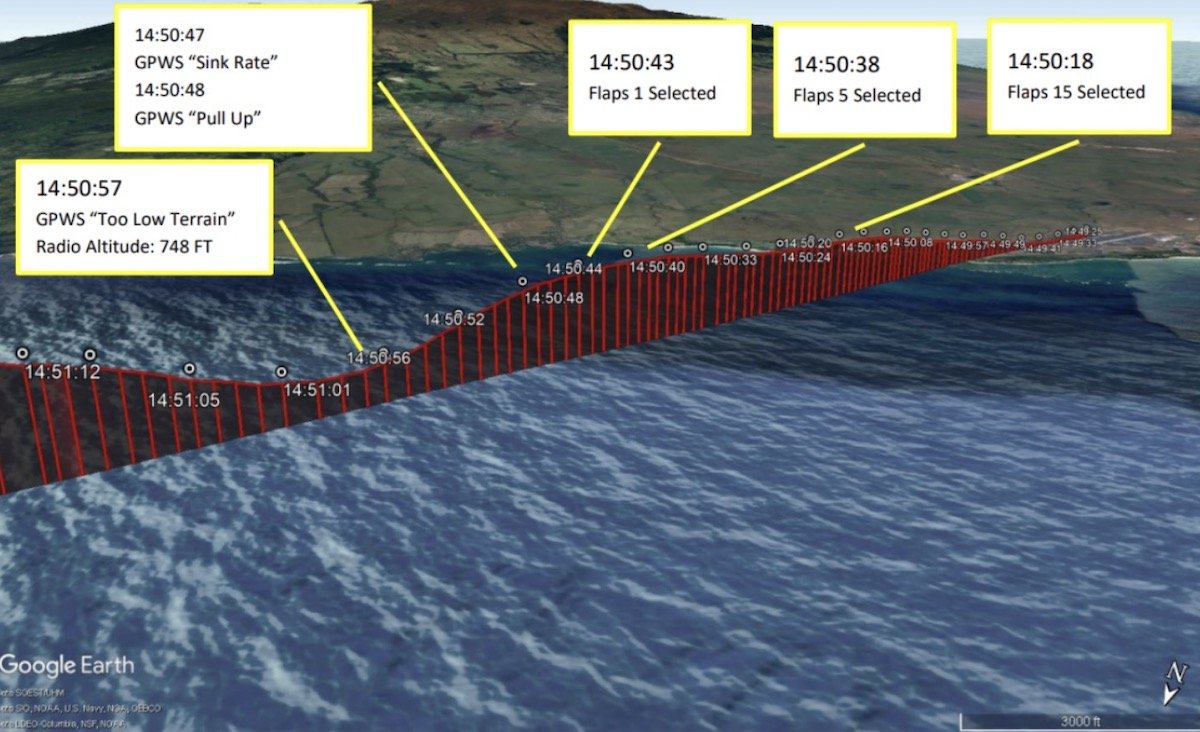
Here’s how the NTSB describes the probable cause of the incident:
“The flight crew’s failure to manage the airplane’s vertical flightpath, airspeed, and pitch attitude following a miscommunication about the captain’s desired flap setting during the initial climb.”
My take on this United 777 incident
Aviation is incredibly safe, despite how much goes into it, and how many human factors there are. Along those lines, it’s wild how a simple miscommunication of a single number nearly caused a catastrophic incident. With that in mind, a few thoughts:
- It’s hard to put the blame on one specific pilot here; the first officer misunderstood the captain, and the captain was the one flying the plane
- Typically if there’s a small miscommunication, there’s plenty of time to recover, though takeoff is such a critical phase of flight, so a small error can have big implications
- I think what’s perhaps most alarming here is how this incident was never reported to the NTSB voluntarily by United, but rather it wasn’t until this got media coverage a couple of months later that United finally opened an investigation
- Honestly, this flight was within seconds of having a very different ending, so thank goodness the pilots at least recovered the way they did
Bottom line
The NTSB has released its final report about a scary incident that happened in late 2022, when a United Airlines Boeing 777 was departing Maui. During the climb out, the aircraft accidentally descended all the way to 748 feet.
The cause of the incident was determined to be a miscommunication between the two pilots over the flap settings. The captain asked for flaps to be set to five degrees, though the first officer thought he said 15 degrees. On top of that, the NTSB blames the pilots’ failure to manage the aircraft following a miscommunication.
What do you make of this United 777 incident?
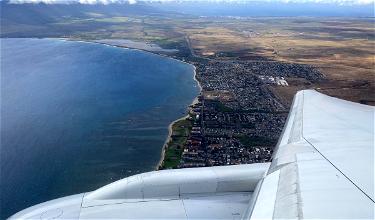

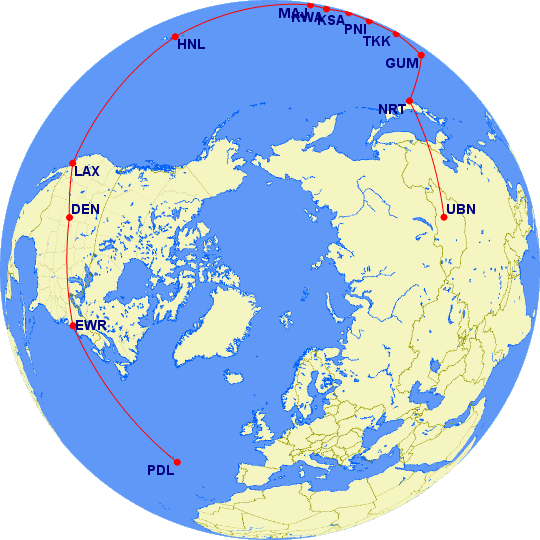
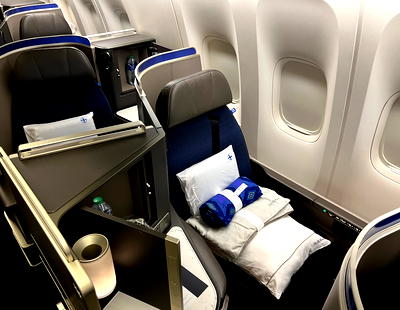
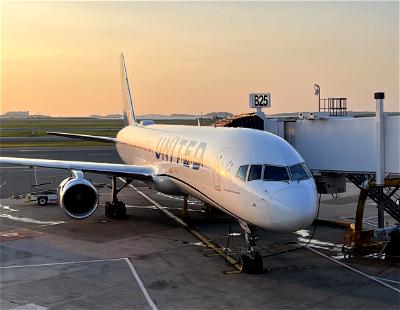
Two questions arise in my amateur mind:
1. Should the flap setting not have been read back to the Captain by the co-pilot just as it done over the radio with ATC regarding altitude etc. to ensure everyone is on the same page?
2. Are there consequences for United for not reporting this immediately?
Miscommunication was not the cause of this - it was only a minor contributor. The captain's choice to hand fly the departure followed by his getting distracted from flying the airplane (the flying pilot's first responsibility). The triple autopilot system on this aircraft is very capable of handling the aircraft in conditions such as this and would have been the better choice to begin with. Had the autopilot been engaged early after liftoff the captain...
Miscommunication was not the cause of this - it was only a minor contributor. The captain's choice to hand fly the departure followed by his getting distracted from flying the airplane (the flying pilot's first responsibility). The triple autopilot system on this aircraft is very capable of handling the aircraft in conditions such as this and would have been the better choice to begin with. Had the autopilot been engaged early after liftoff the captain would have been in a better position to monitor the flight and the departure would likely have been completely uneventful.
Looks to me like the pilots, while messing with the flaps, got disoriented, distracted and quit “flying” the plane. As a result, found themselves in a dive very close to the water. The GPWS system alert AND pilot compliance saved the day. There are other procedural oddities here but they are too obtuse for this venue.
I’m somewhat surprised & confused as to the NTSB’s investigative conclusion regarding UAL 1722 - PHOG departure on 12/18/22. Certainly the communication CRM aspect contributed, seems like the Captain was very much tasked loaded with flying the aircraft. The Captain’s airmanship was the main component.
A flaps 20 t/o at MAX thrust will result in a time compressed transition to a normal climb profile if you’re not ready for such. Sounds like the Captain...
I’m somewhat surprised & confused as to the NTSB’s investigative conclusion regarding UAL 1722 - PHOG departure on 12/18/22. Certainly the communication CRM aspect contributed, seems like the Captain was very much tasked loaded with flying the aircraft. The Captain’s airmanship was the main component.
A flaps 20 t/o at MAX thrust will result in a time compressed transition to a normal climb profile if you’re not ready for such. Sounds like the Captain failed to appropriately brief the departure to include the non-standard profile.
I believe the NTSB failed miserably regarding this investigation. Would be interesting to know Boeing’s involvement in the investigation.
Ground proximity warning system have prevented a lot of accidents. Controlled descent into terrain used to be the primary cause of commercial airline hull losses.
Is it normal to retract the flaps to just 5 degrees at only 2000+ feet on climb out in such a heavy aircraft? Seems a bit premature but Im not a pilot.
Hey, pretty good try with the photo. Except this is the usual approach to Maui, flying in South over the isthmus, with Kula and Haleakala to the left, before making a 180 degree turn right, with the West Maui Mountains and the wind farm to the left, before the final approach North to OGG. I happen to know, because I live right below that right engine on the photo, LOL. Maybe only 1% to 2%...
Hey, pretty good try with the photo. Except this is the usual approach to Maui, flying in South over the isthmus, with Kula and Haleakala to the left, before making a 180 degree turn right, with the West Maui Mountains and the wind farm to the left, before the final approach North to OGG. I happen to know, because I live right below that right engine on the photo, LOL. Maybe only 1% to 2% the departure is to the South, when we have a weather inversion, with winds blowing from the South. The usual departure is to fly into the trade winds, blowing in from NE. Aloha.
Terrible job by all parties involved. Should have never happened and thankfully the GPW indicator clued in the two dummies to pull the fuck up. Thank goodness the plane didn’t crash!
Maybe it’s just this audience that would have noticed it but I still can’t believe that there were no passenger accounts of this—did they think it was normal? Was there a super low cloud cover so they didn’t realize they were almost in the water?
How did no one report that after they were climbing after takeoff all of a sudden the ocean was like right there and they were diving—no phones, no live streaming? Just seems weird how things went on like it was routine.
I can imagine flying above the ocean can be challenging for pilots because it’s hard to visually tell how high above the surface you are unless you’re super close. Especially on a clear day. I watched a video about the Aeroperu accident. Not having the right instruments or proper awareness in that kind of situation can be hell for the pilots and the passengers involved.
Yeah, but that was at night.
If I understand correctly, flight recorders are only 2 to 3 hours of conversation/data. Talk of 24 or 48 hr recorders has been mentioned, but no action.
Sure would have been helpful to get the tape of the DL & AA incursion at JFK in January. The AA crew kept flying to London allowing the tape to loop.
Can someone explain why the altitude wasn't noticed as decreasing? It talks about the attitude, and how the nose was pitching down, but why weren't they watching the altitude? How does that get to 700 feet without being called out?
B777 low altitude leaving Maui in Dec 2022
Sounds like the pilot lost his instrument-flying focus, and didn’t maintain positive pitch throughout the initial climb. Complicated by actual IMC, heavy rain, wind shear, auto throttle, flap-based speed restrictions, and a miscommunication with the FO about the flap setting. Interestingly, the pitch down didn’t occur until after all the flap shenanigans were over, and the flap setting had gone from 20 to 15 to 5 to...
B777 low altitude leaving Maui in Dec 2022
Sounds like the pilot lost his instrument-flying focus, and didn’t maintain positive pitch throughout the initial climb. Complicated by actual IMC, heavy rain, wind shear, auto throttle, flap-based speed restrictions, and a miscommunication with the FO about the flap setting. Interestingly, the pitch down didn’t occur until after all the flap shenanigans were over, and the flap setting had gone from 20 to 15 to 5 to 1. I’d say they these paid professionals need retraining/practice on their instrument scan, if they let an undesired and potentially catastrophic descent continue for an entire 10 seconds. At least they only had sea level to deal with - imagine if they were climbing toward higher terrain. This points out yet again, the complications introduced by partial automation, while the humans are still in the loop. Both humans made errors, and the automation contributed by simply following instructions that were at best wrong for the conditions.
Pilot error all the way!
Curious why the first reaction to overspeed the flaps was pull power and not increase pitch angle. My first instinct is get away from the ground/water and climb. They were somewhat heavy, pulling power seems wrong.
Confusion on the description of the weather conditions. Wind shear is not normally associated with clear skies. I thought there were thunderstorms in the area.
It was initially reported, the pilots reported the...
Pilot error all the way!
Curious why the first reaction to overspeed the flaps was pull power and not increase pitch angle. My first instinct is get away from the ground/water and climb. They were somewhat heavy, pulling power seems wrong.
Confusion on the description of the weather conditions. Wind shear is not normally associated with clear skies. I thought there were thunderstorms in the area.
It was initially reported, the pilots reported the incident but United failed to pull the tapes/data.
What I'd like to know: was the plane in stall and falling with the nose more or less level until they realized, pitched the nose down and gained speed to get out of the stall? did they not even know they were losing altitude until all the alarms were going off? The plane couldn't have possibly entered a dive when this started to happen...
miracle on the hudson speedrun any%
So what happens to these pilots? Re-training? Were they suspended? fired?
Don't have an opinion, but curious on the outcome from this perspective? What's right and helpful?
"What's right and helpful?"
Learning from mistakes. We all make them, some are more significant than others. Not sure about the pilot world, but ATC shifted from a punative culture to a safety culture a couple decades ago. Used to be 3 strikes and you're done. That's one reason why ATC got it's reputation as the most stressful job, and why it had a high suicide rate. (wheras nowadays, it varies significantly, and is usually...
"What's right and helpful?"
Learning from mistakes. We all make them, some are more significant than others. Not sure about the pilot world, but ATC shifted from a punative culture to a safety culture a couple decades ago. Used to be 3 strikes and you're done. That's one reason why ATC got it's reputation as the most stressful job, and why it had a high suicide rate. (wheras nowadays, it varies significantly, and is usually fairly chill).
I'd imagine that the pilots... with a direct view of what was in front of them... realize the gravity, and will not be making that error again. Their lives were at stake, too.
Unsure about any retraining/refresher, but most definately they aren't being fired over this. Nor should they be.
Typo: Captain actually had 5000 hours on the 777 according to the NTSB report. I would probably consider that pretty well experienced on the 777. I don't think you can easily upgrade to a captains seat without a decent number of hours on that type (as FO), for any airline.
What's more interesting is that the FO has 5300 hours total, but 2395 as captain on another fleet, about half his flying overall.
That makes more sense, I thought it would be odd to roster both a captain and FO with little type experience.
Is there a first-hand account somewhere? This seems terrifying.
I've heard secondhand reports that the cabin was calm. But it seems that following the media coverage, several people came out saying that people were screaming. I wouldn't trust that.
A simple fix here would be to require "closed loop communication" between captains and first pilots. This would require the first pilot to repeat what he heard as the captain's order, confirm then proceed to his action. This is how it works all the time in hospitals between doctors, nurses, surgeons, anesthesia etc when asking to administer medications during procedures, emergencies etc.
I know flying is extremely safe, but I'm shocked closed loop communications are...
A simple fix here would be to require "closed loop communication" between captains and first pilots. This would require the first pilot to repeat what he heard as the captain's order, confirm then proceed to his action. This is how it works all the time in hospitals between doctors, nurses, surgeons, anesthesia etc when asking to administer medications during procedures, emergencies etc.
I know flying is extremely safe, but I'm shocked closed loop communications are not standard in every cockpit.
This is exactly what I was thinking. Is it not *required* for pilots to communicate with each other closed-loop the way they do with ATC, at least for critical communications like this? And if it's required, did the pilots communicate this way? And if it's not required, why isn't it?
That’s the theory in hospitals but generally not followed. Hospitals are incredibly unsafe places, especially now that they are busier than ever and have less staff.
In my youth, as a Check Capt. with East African Airways, Comet 4c and SVC10, .. if I asked for flaps 20.. 1st officer would set flaps to 20 and CONFIRM.. flaps set 20. Yanks gone too auto and soft and sloppy??
Isn't this "old" news? I heard about this several months ago and today at least 3 different bloggers have posted it.
What gives?
It looks like a preliminary report was released a few months ago. But the NTSB’s final report was released on 10 August. So that’s new news and as such no surprise there’s been lots of reporting in the last 24 hours.
Did the co-pilot not repeat what flaps are set to after setting it to 15?
The biggest issue IS that United did not preserve the flight data from the aircraft even though it appears the pilots' statements were done on the day of the flight. This incident in that regard mirrors the incident in which an AA 777 taxied in front of a DL 737 which was taking off.
They clearly discussed the incident after the flight stabilized and that should have been preserved.
it is only because...
The biggest issue IS that United did not preserve the flight data from the aircraft even though it appears the pilots' statements were done on the day of the flight. This incident in that regard mirrors the incident in which an AA 777 taxied in front of a DL 737 which was taking off.
They clearly discussed the incident after the flight stabilized and that should have been preserved.
it is only because Jon Ostrower of The Air Current analyzed public flight data that this became serious enough for the FAA and NTSB to get involved - which should have happened the minute the plane landed in SFO.
The issue here like the UA 767 hard landing in IAH which resulted in totaling that aircraft is that two relatively inexperienced pilots on that aircraft or in their roles were paired together.
Excellent, they blamed the pilots so I can sue to get some dollar for being on the plane. Got to love America
Who else should they blame?